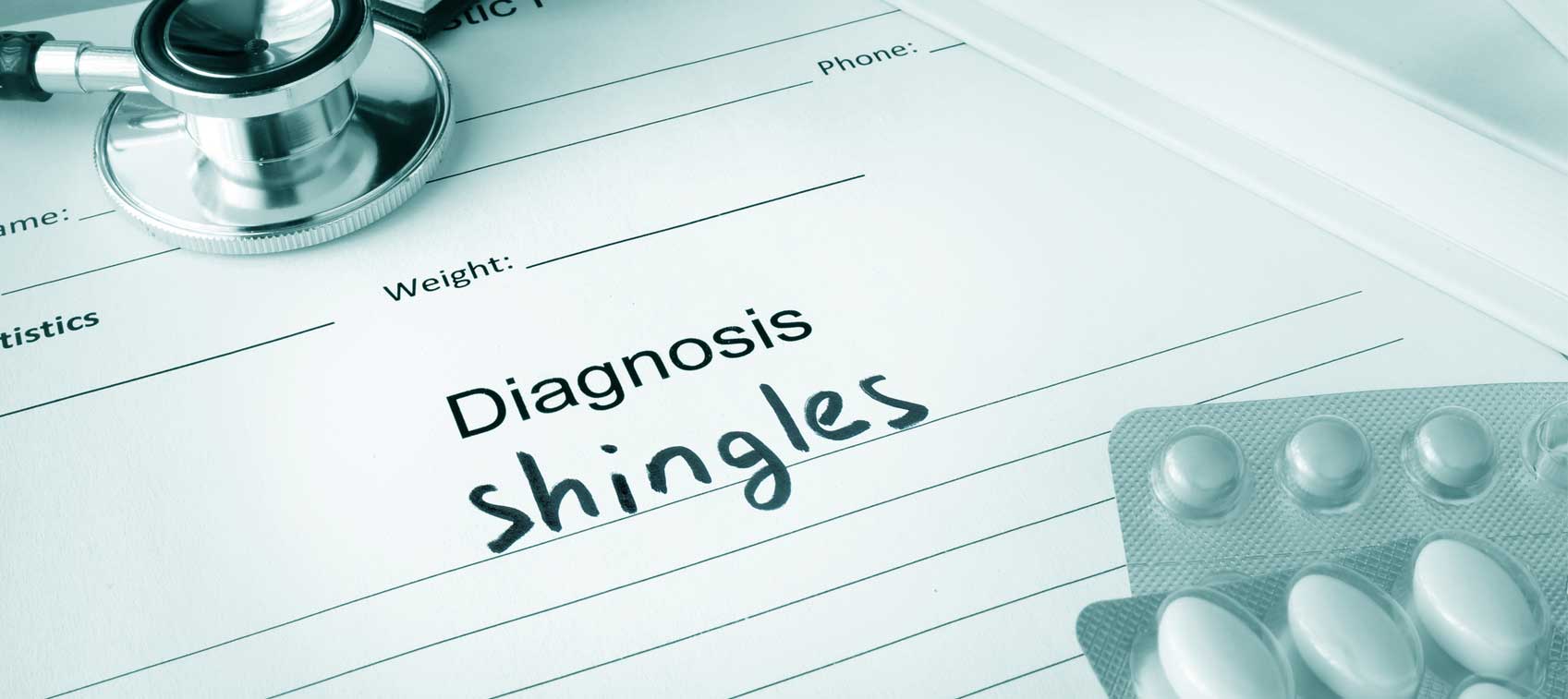
If you are a member of the senior community or care about someone who is, it’s a good idea to familiarize yourself with shingles.
The CDC estimates that a third of the people in the United States will experience shingles in their lifetime. Considering how painful shingles can be, it’s best to educate yourself if you contract it or need to care for someone else who does.
Shingles typically affects people who are over the age of 50 years old. Your risk of getting shingles increases as you age.
Shingles: What is it?
Your doctor may refer to shingles as herpes zoster. Shingles is a viral infection, and it causes an excruciating rash. Shingles come from the same virus that causes chickenpox.
The virus is called varicella-zoster.
If you’ve had chickenpox, you can get shingles. The virus lies dormant in the spinal cord and brain within nerve tissue, and then it can reactivate years later as shingles.
Shingles appear as a painful rash or stripe of blisters. They’re typically located on the torso on one side of the body, but they can appear anywhere on the body. Fortunately, shingles is not life-threatening.
Vaccines have been developed to reduce the risk of shingles, and your doctor may discuss it with you at your annual physical when it’s time to consider taking the vaccine. If you are over the age of 50 and haven’t discussed it, you may want to ask about it at your next appointment.
For people who do get shingles, early treatment can help shorten the infection, and it can help lessen the chances for complications.
Postherpetic neuralgia is the most common complication, and it causes the pain from shingles to linger for a long time even after the blisters have cleared up due to nerve damage. Postherpetic neuralgia occurs in about 20% of patients.
Are Shingles Contagious?
It is important to remember that it is possible to pass the shingles virus to anyone who doesn’t have chickenpox immunity.
Transmission occurs most often when a person comes into contact with open sores from the shingles rash. The other person will not get shingles. However, they may develop chickenpox.
Chickenpox can be a significant health risk for some people. Until your blisters have scabbed over, it is important to practice physical distancing with anyone who hasn’t had chickenpox yet or been vaccinated.
Keep in mind that groups like those with weakened immune systems, pregnant women, and infants are especially vulnerable.
What Are the Symptoms?
Symptoms of shingles usually appear on only one small section of the body—and only on one side. You should be aware of the symptoms to expect. They include:
- Pain—a burning, numbness, or tingling pain
- Touch—sensitive skin
- Rash—a few days after the pain, a red rash will appear
- Blisters—the fluid-filled blisters will break open and crust over
- Itchiness
Additionally, you may also experience:
- Fever
- Light sensitivity
- Headache
- Fatigue
Pain is usually the first symptom. The pain can range from mild to very intense for some.
Because the pain arrives without the other symptoms, it is occasionally mistaken for other medical complications that can create pain in the torso like heart, lungs, and kidney complications.
It is also possible to experience the pain of shingles without developing the hallmark rash.
Typically, the rash forms as a stripe of blisters that wraps the torso on the left or right side. The rash may also be localized around one eye or one side of the face and/or neck.
What To Do if You Suspect Shingles
Call your doctor as soon as you think you might have shingles. Remember, early treatment can significantly reduce your risk of painful complications and nerve damage.
Starting treatment of antivirals within 72 hours of infection can help reduce the severity of your infection. This means you stand a greater chance of shortening how long the skin rash lasts and lessen how painful your symptoms get.
If you think you’ve gone past the 72-hour window of opportunity, it’s still a good idea to contact your primary care doctor. It may not be too late for treatments to still be beneficial, and this is especially the case if you notice new rashes are still forming.
Contact your doctor if you experience scenarios like:
- Pain and rash near or around the eye. Untreated shingles in this area can cause lasting harm to the eye.
- If you’re over 60 years of age, it is best to contact your doctor. Age can increase your chances of complications.
- If a weakened immune system is present when the infection occurs.
- The rash you experience is widespread and painful.
What Else Can You Do?
The pain from shingles can be quite uncomfortable.
Pain management is an important part of care during a shingles infection. It’s important to discuss your pain management options with your primary care physician.
The best pain management plan for you will depend on the level of pain, underlying health issues, and any medications you are currently taking that may interfere.
These pain management options are in addition to the antivirals, and they should not be viewed as a replacement therapy for seeking antivirals from your care provider. These options are for short-term use to relieve the pain associated with shingles.
- NSAIDS—Non-steroidal anti-inflammatory is a good place to start for the management of shingles pain. These are over-the-counter (OTC) options. The two most popular choices on the market are ibuprofen and naproxen. These medications are meant to be used for up to 1 to 2 weeks during mild to moderate pain.
- Glucocorticoids—Steroids may be needed for more severe pain. These may also boost the healing process. Your provider will be able to prescribe these if they are needed and provide a detailed list of what you should expect from taking this medication.
- Opioid pain medications—These pain management medications require a prescription, and you should discuss them thoroughly with your provider. For short-term use, they may provide relief. However, they do come with risks like dependency, addiction, and additional side effects.
The best pain reliever for you will depend on the severity of your pain, and your options should be discussed with your physician.
Are There Natural Options for Pain Management?
With some of the more traditional pain management options available, there are risks and concerns.
There are more natural options available in the form of supplements. Still, as with any changes to your regimen, you should discuss them with your doctor before you begin taking anything new.
These should not be viewed as a substitute for the antivirals that are mentioned above. These, like the pain management options, are meant to be supportive options that you discuss with your doctor.
Here are some supplements to discuss with your doctor:
- High-dose vitamin B12 has shown promise for being a complementary therapy for soothing pain.
- Amino acid L-lysine is a building block of protein that the human body cannot produce, and it has the potential to discourage the replication of the herpes zoster virus.
Because the pain associated with shingles can be overwhelming, herbal teas and supplements may help soothe the feelings of restlessness that come with pain and help restore your sleep health to your normal levels.
You may want to consider herbal supplements like:
- Melatonin
- Oregano oil
- Echinacea
- Lemon balm
- Green tea
- John’s wort
Talk to your doctor before you add any new supplements into your daily routine. In addition to supplements, there are options that may help you naturally soothe your symptoms.
Here are some ideas for naturally addressing the pain associated with shingles:
Soothing Baths
Cleansing the area where blisters occur helps to reduce the potential for spreading the infection. A cool bath can calm your itchiness and ease the pain. Adding 1 to 2 cups of cornstarch or colloidal oatmeal to a lukewarm bath can gently soothe symptoms, but avoid hot water as it has the potential to worsen shingles blisters.
Remember not to reuse any towels or washcloths. They should be washed after each use to reduce the risk of spreading the infection to others.
Lotions and Creams
Lotions and creams can soothe the skin and ease the itching sensation, but they should be used sparingly to avoid prolonging the healing process. Calamine lotion used after bathing can soothe the skin and encourage blisters to dry out.
Ask your doctor about other lotions that may soothe or reduce the irritation from the inflamed areas.
Talking to Loved Ones
Reaching out to others can help support your emotional wellness during any difficult times you encounter with shingles. A conversation about something else may also help distract you from any discomfort.
Leisure Activities
Like reaching out to loved ones, participating in leisure activities like listening to music, reading a good book, or watching a movie can help support your mental health and act as another distraction from your discomfort.
Summary
With one in three chances of contracting shingles as an older adult in the United States, it is essential to be aware of what shingles are, what to expect, treatments your doctor may consider, and what you can do to soothe yourself at home.
Having shingles isn’t fun, so be sure to seek treatment quickly. Remember to talk with your doctor about the vaccine if you are over the age of 50.


